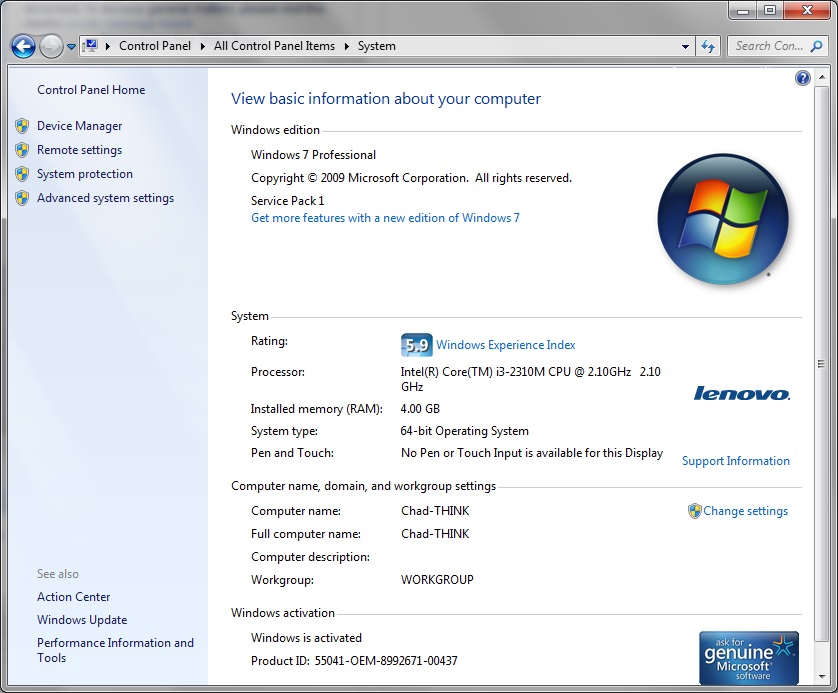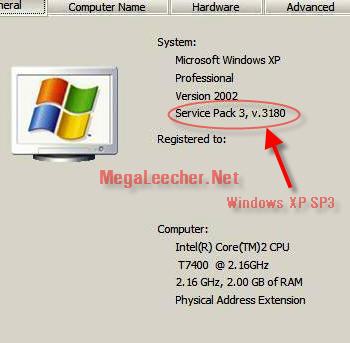Windows Service Pack 3 Patch Download Windows 7
reader comments
The most recent Windows 7 service pack is SP1, but a Convenience Rollup for Windows 7 SP1 (basically an otherwise-named Windows 7 SP2) is also available which installs all patches between the release of SP1 (February 22, 2011) through April 12, 2016.
with 89 posters participatingAnyone who's installed Windows 7 any time in the last, oh, five years or so probably didn't enjoy the experience very much. Service Pack 1 for the operating system was released in 2011, meaning that a fresh install has five years of individual patches to download and install. Typically, this means multiple trips to Windows Update and multiple reboots in order to get the system fully up-to-date, and it is a process that is at best tedious, typically leading one to wonder why, at the very least, it cannot pull down all the updates at once and apply them with just a single reboot.
The answer to that particular question will, unfortunately, remain a mystery, but Microsoft did today announce a change that will greatly reduce the pain of this process. The company has published a 'convenience rollup' for Windows 7 Service Pack 1 (and Windows Server 2008 R2), which in a single package contains all the updates, both security and non-security, released since the Service Pack, up through April 2016. Installing the rollup will perform five years of patching in one shot.
In other words, it performs a very similar role to what Windows 7 Service Pack 2 would have done, if only Windows 7 Service Pack 2 were to exist. It's not quite the same as a Service Pack—it still requires Service Pack 1 to be installed, and the system will still report that it is running Service Pack 1—but for most intents and purposes, that won't matter. Microsoft will also support injecting this rollup into Windows 7 Service Pack 1 system images and install media.
The biggest awkwardness will probably be its distribution; Microsoft isn't planning to ship the rollup over Windows Update. Try to update a Windows 7 system the naive way and you'll still be faced with the tedium of multiple reboots and update cycles. You'll have to explicitly download and install the rollup if you want to skip that.
For updates released after April 2016, Microsoft will also produce monthly rollups of non-security updates, for Windows 7 Service Pack 1, Windows Server 2008 R2, Windows 8.1, Windows Server 2012, and Windows Server 2012 R2. With this new process, the company will publish some number of security fixes, and a single combined, cumulative non-security fix. This package will be distributed and deployed over Windows Update (and similarly, Windows Server Update Services and System Center Configuration Manager).
Less helpfully, however, Microsoft will stop publishing individual update packages on the Microsoft Download Center. This provided an alternate route to obtain security and non-security fixes as individual installable packages. These manually installed packages often work even when Windows Update is misbehaving, and are also used by software and hardware vendors as a way of distributing essential fixes along with software or drivers that need them.


Instead, the company is to distribute these packages using the Microsoft Update Catalog. This is a relic of a forgotten age; it's a 'website' that only works in Internet Explorer ('6.0 or later') and requires an ActiveX control to use. Edge, Chrome, or Firefox will not work. The branding is Windows XP-era, and dotted around the site are references to 'support newsgroups.' Microsoft ended its newsgroup-based support way back in 2010.
Windows Service Pack 3 Patch Download Windows 7 64 Bit Free

Windows Xp Service Pack 3 Patch Download
The Update Catalog is, in fact, a useful resource; as well as the patches, it also offers a place to download the device drivers that Windows Update distributes. But it's a resource that has been abandoned for a number of years. Microsoft says that later in the year it will be updating the Update Catalog to work in modern browsers; we can't help but feel it should make this change before forcing people to use the site, rather than after.